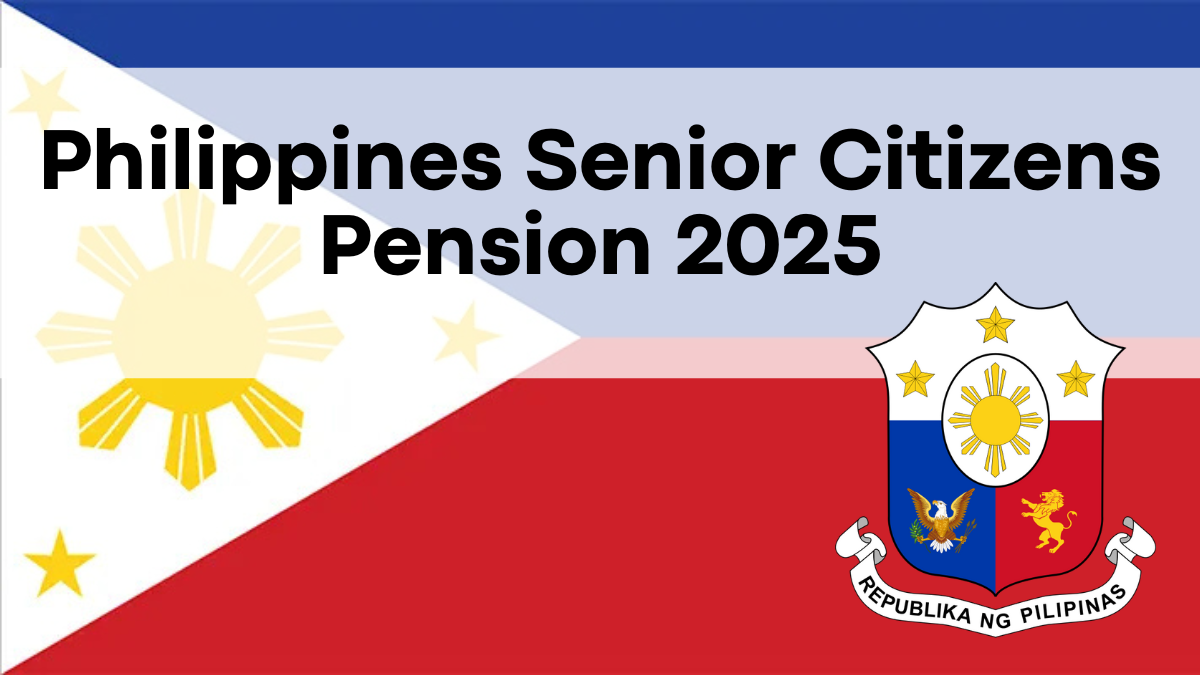The Senior Citizen’s Pension in the Philippines plays a vital role in providing financial support to elderly Filipinos. As inflation drives up the cost of essentials, many seniors are left vulnerable. In response, the Philippine government has increased the pension allocation for 2025 to help retirees cope with economic pressure and secure basic needs such as food, healthcare, and daily living expenses.
For 2025, major updates include a 14% increase in monthly pension payments, a substantial budget allocation of P48.81 billion, and additional benefits for indigent seniors. These measures reflect a larger effort to protect the dignity and financial security of elderly citizens who often lack alternative income sources.

Philippines Senior Citizens Pension 2025
| Category | Details |
|---|---|
| Administering Agency | Department of Social Welfare and Development (DSWD) |
| Pension Program Type | Social Pension and SSS Pension |
| 2025 Pension Budget | P48.81 billion |
| Expected Increase | 14%–15% in pension payments |
| Additional Support | P500/month for indigent seniors |
| Payment Mode | Monthly bank deposit (tax-free) |
| Start of Payments | February 29, 2025 |
| Official Website | https://dswd.gov.ph |
Overview of the Philippine Senior Citizen’s Pension
The Philippine Senior Citizen’s Pension is managed by the Department of Social Welfare and Development (DSWD). Its primary goal is to assist low-income elderly individuals by offering monthly cash support to help them meet their basic needs. This pension acts as a safety net for seniors, particularly those without family support or personal savings.
Funding for the program comes from the national government, with disbursements handled through the Social Security System (SSS) and DSWD-administered Social Pension schemes. Employees contribute to the SSS throughout their working lives, while the social pension is non-contributory and targeted at the most economically disadvantaged seniors.
Pension Amount for 2025
For 2025, senior citizens can expect a 14% increase in pension payments. The exact amount varies depending on eligibility, income level, and the type of pension program.
-
The increase is part of a broader effort to match rising inflation and ensure retirees can afford essential services.
-
The Department of Budget and Management (DBM) has earmarked a P223,981.99 increase in retirement funds.
-
Discussions are ongoing in coordination with the House of Representatives to finalize additional increases.
For the most vulnerable seniors—those with no other source of income—an extra P500 per month will likely be added to help cover healthcare, food, and other necessities. This ensures that indigent seniors are not left behind.
Potential Adjustments and Future Increases
The SSS and the DBM are both reviewing inflation trends to consider further increases to pension benefits later in the year. Payouts could increase by as much as 15%, depending on economic conditions and budget availability.
Increased benefits reflect the government’s long-term goal of financial dignity for senior citizens, especially those who spent their lives contributing to the workforce but now rely solely on pension support. Any upcoming changes will be formally announced by the SSS or the DBM.
Pension Payment Dates in 2025
Pension payments are made monthly and directly credited to retirees’ registered bank accounts. These payments are tax-free, ensuring seniors receive the full benefit without deductions.
2025 Payment Schedule:
| Month | Payment Date |
|---|---|
| February | 29 February 2025 |
| March | 29 March 2025 |
| April | 20 April 2025 |
| May | 31 May 2025 |
| June | 28 June 2025 |
| July | 31 July 2025 |
| August | 30 August 2025 |
| September | 30 September 2025 |
| October | 31 October 2025 |
| November | 28 November 2025 |
| December | 31 December 2025 |
Most pensions are paid on the last business day of each month, with a few earlier disbursements depending on scheduling. Recipients should ensure their bank information is up to date to avoid delays.
Eligibility Criteria
To qualify for the 2025 pension, seniors must meet specific government criteria:
-
Be a Filipino citizen aged 60 years or older
-
Be officially retired from employment
-
Not receiving any regular income or support from family
-
Not a beneficiary of SSS or GSIS if applying for the DSWD social pension
-
Have completed any necessary registration or verification requirements
Pensioners must ensure they are enrolled with a valid bank account, and documentation is properly submitted to receive payments on time.
Additional Government Support
Beyond the core pension payments, the government is expanding other forms of senior assistance in 2025:
-
Medical Subsidies: More funding for elderly health programs and medication support
-
Social Welfare Programs: Outreach and community-based assistance via DSWD field offices
-
Livelihood Grants: Small financial grants for capable seniors wishing to engage in livelihood activities
These programs reflect the government’s broader commitment to inclusive elder care and dignity in aging.
Frequently Asked Questions (FAQs)
Q: Who administers the Senior Citizen’s Pension in the Philippines?
A: The Department of Social Welfare and Development (DSWD) manages the social pension, while the SSS handles contributory pensions.
Q: How much will the pension increase in 2025?
A: Pension payments are expected to rise by 14% to 15% compared to the previous year.
Q: Who qualifies for the indigent senior pension?
A: Seniors with no regular income, family support, or SSS/GSIS pension may qualify for the DSWD’s social pension.
Q: Are pension payments taxable?
A: No. Pension benefits are fully tax-free.
Q: When are pensions paid in 2025?
A: Monthly, typically at the end of each month. The earliest payment will be on February 29, 2025.
Q: Can seniors receive both SSS and DSWD pensions?
A: No. The DSWD social pension is for those without any other retirement income.
Q: How do I update my bank details for pension payments?
A: Contact your local SSS branch or DSWD office and submit your updated account information with valid ID.
For More Information Click Here